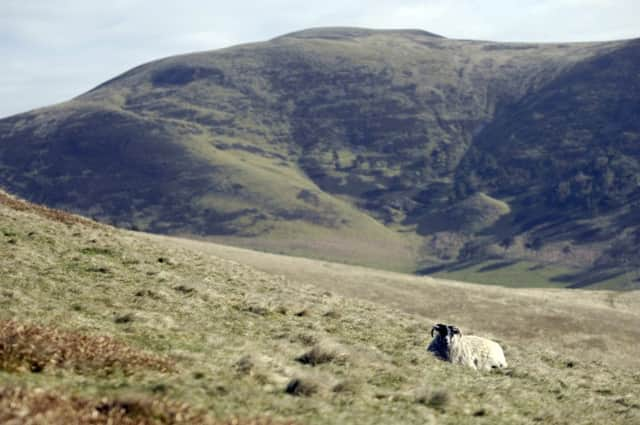Integration key for Scotland’s hills farms
This article contains affiliate links. We may earn a small commission on items purchased through this article, but that does not affect our editorial judgement.


More than 70 per cent of Scotland’s land area consists of hills and mountains or has vegetation with upland characteristics. Our mountains, moors, hills and heaths extend from near sea level in the north and west to the highest mountain tops across Scotland.
So don’t just imagine the jagged peaks of the Highlands or the bulge of the Cairngorm massif. Even in the lowlands most of us are never far from a view of some of Scotland’s uplands. Think, for example, of the Pentland Hills behind Edinburgh, the Ochils and Campsie Hills in the Central Belt, the Galloway Hills in the far south-west, or the island of Arran rising out of the Clyde.
Advertisement
Hide AdAdvertisement
Hide AdLand use in the uplands can vary markedly from place to place. However, most of our current upland land management systems have two things in common. First they tend to concentrate on a single large-scale form of “production”, such as farming, forestry, shooting sports or nature conservation management. Secondly those practising each of these generally see the other systems as a “threat” to their way of life.
Focusing on one single income stream, be it livestock, timber, game or tourism, can have the advantage of allowing managers to concentrate their efforts and develop expertise in that type of work. It does, however, also carry the major disadvantage of leaving each enterprise very vulnerable to external pressures and shocks.
For example, extreme weather events associated with ongoing climate change can kill livestock or damage trees. Focusing on the large-scale production of only one type of animal or plant, whether it be sheep or sitka spruce, makes each very vulnerable to any disease epidemic. Meanwhile market pressures, from an increase in input costs or a drop in the price paid for products, can severely affect the continued economic viability of the enterprise.
SRUC’s 2,200ha upland research farms at Kirkton and Auchtertyre near Crianlarich are typical of most upland farms across Scotland in that the majority of the land consists of open moorland and our farm management is focused on sheep and cattle production. But we are also atypical in that over the past 15 years we have planted large areas of woodland and are keen to plant more.
Why? Because we firmly believe that integrating farming and forestry much more on Scottish upland farms could provide a range of benefits. To livestock production, through increasing the amount of shelter available. To the environment by, for example, providing habitat for other wildlife and, if trees are planted in the right places, alleviating flooding downstream. There are economic benefits too and integration like this could increase the resilience of upland farms to climatic and economic shocks.
However, the need to mitigate climate change and meet the demands of the timber industry mean there is a push for more large-scale forestry in Scotland’s uplands. Conversely, concerns about food security, biodiversity and maintaining the social viability of rural areas also means there is a push to retain livestock farming on Scotland’s hills. Both aspirations are currently seen as mutually exclusive.
But it is possible to have farming and forestry on the one farm. Last autumn our Hill & Mountain Research Centre hosted a visit by a group of farmers from the Black Forest region of Germany. For them it is second nature to integrate farming and forestry, so much so in fact, that they found it difficult to understand the continuing major division between upland farming and forestry in Scotland and the rest of the UK.
Our Hill & Mountain Research Centre was created more than 40 years ago to conduct research that might help maintain the economic viability of Scotland’s upland livestock farming industry. Back then the focus was primarily on addressing livestock productivity through better health, nutrition and welfare. It remains a priority for us.
Advertisement
Hide AdAdvertisement
Hide AdSo it is with that purpose in mind that we will continue to encourage more open debate on the benefits of greater integration of forestry production into livestock farming systems. And we’ll also continue to practice what we preach by working hard to increase the breadth of agricultural, environmental and agro-forestry research and demonstration at the centre.
• Professor Davy McCracken is head of the Hill & Mountain Research Centre at Scotland’s Rural College www.sruc.ac.uk Follow the activities of the Centre on Facebook at www.facebook.com/sruc.ac.uk.
SEE ALSO